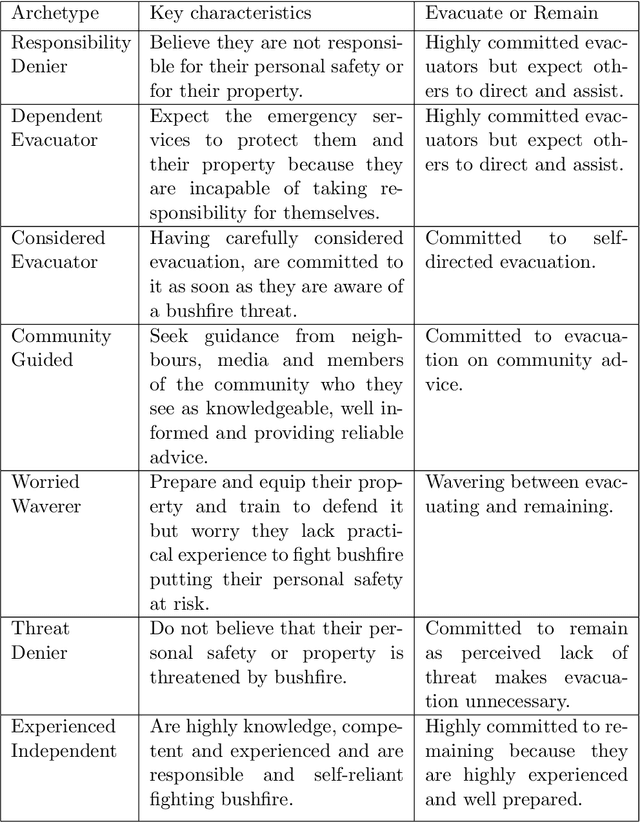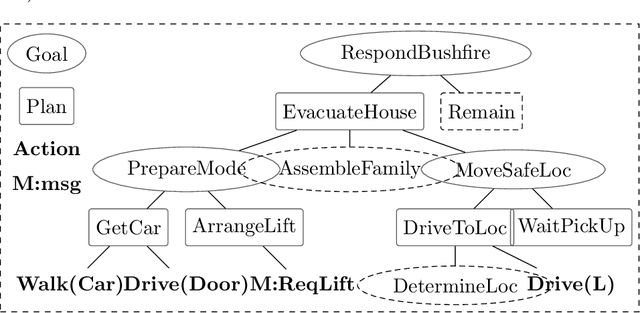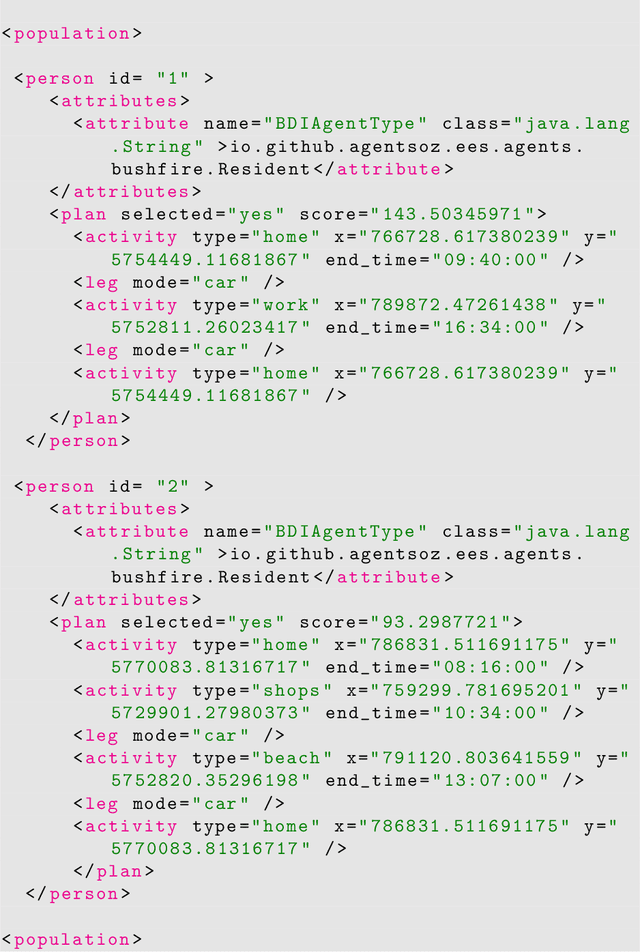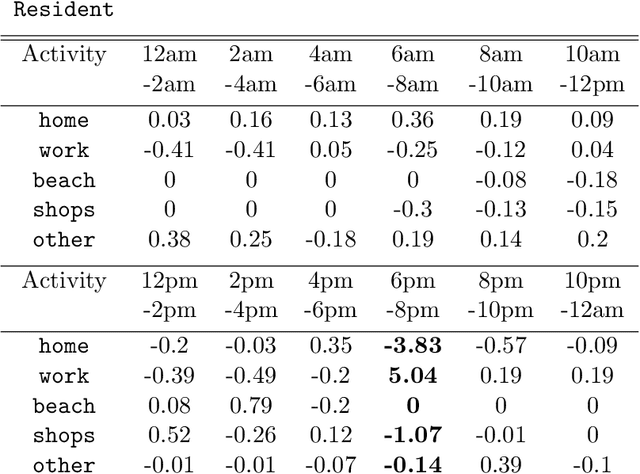Modelling Bushfire Evacuation Behaviours
Paper and Code
Sep 03, 2019



Bushfires pose a significant threat to Australia's regional areas. To minimise risk and increase resilience, communities need robust evacuation strategies that account for people's likely behaviour both before and during a bushfire. Agent-based modelling (ABM) offers a practical way to simulate a range of bushfire evacuation scenarios. However, the ABM should reflect the diversity of possible human responses in a given community. The Belief-Desire-Intention (BDI) cognitive model captures behaviour in a compact representation that is understandable by domain experts. Within a BDI-ABM simulation, individual BDI agents can be assigned profiles that determine their likely behaviour. Over a population of agents their collective behaviour will characterise the community response. These profiles are drawn from existing human behaviour research and consultation with emergency services personnel and capture the expected behaviours of identified groups in the population, both prior to and during an evacuation. A realistic representation of each community can then be formed, and evacuation scenarios within the simulation can be used to explore the possible impact of population structure on outcomes. It is hoped that this will give an improved understanding of the risks associated with evacuation, and lead to tailored evacuation plans for each community to help them prepare for and respond to bushfire.
 Add to Chrome
Add to Chrome Add to Firefox
Add to Firefox Add to Edge
Add to Edge